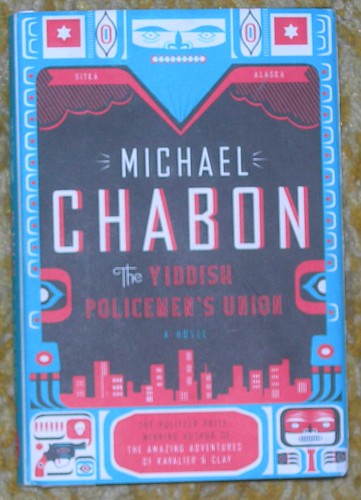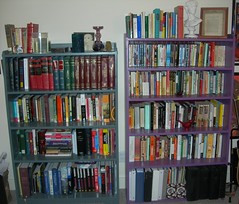411pp
Read: 05/01 - 06/02
I read a bit about this book when it first came out, and it seems that to discuss it, one must begin by discussing the historical quirks on which the book is premised. Briefly, then: back in 1941, there was a proposal by Harold Ickes (U.S. Secretary of the Interior; you know him from "Annie") to make a homeland for Jewish refugees in Alaska. Upon first reading this fact, it took great forbearance to not work it into every conversation of the next few days. (At dinner that night, I had to restrain myself from ham-handedly insinuating it into the conversation thus: "You say you're from Oregon? Did you know...")
So, Chabon spins an alternate history from this weird historical footnote, and filters this through a noir detective lens. Apparently this is toward Chabon's literary goal, first expounded in his introduction to that McSweeney's Thrilling Tales thing a couple of years back, of reestablishing the legitimacy of genre fiction. This may or may not be a laudable goal, but Yiddish Policemen's Union does not serve it all that well. While Chabon writes pitch-perfect detective prose, giddily describing every damned object of any significance with an overwrought simile, and the book has the arc & pace of a detective novel--short chapters, often broken in the middle of a conversation--I'm not sure that the author is entirely willing to play by the full set of established genre conventions. I blame postmodernism, but then, I see postmodernism in my morning bowl of cereal. Much as he'd love people to read detective novels, Chabon didn't seem all that interested in writing a novel where our downtrodden protagonist chases dames, puts together clues, and solves a murder.
Granted, a corpse is dutifully introduced on the first page, and the question of "whodunnit?" ostensibly provides direction right up to the book's very end (is this a legitimate detective genre convention? I felt cheated out of even a shred of denouement), but the progress is frequently interrupted with explorations of Chabon's Great Jewish North. Even the plain question of "who killed the jew in room 208?" leads, not to well-established motives of sex, money, or Los Angeles real estate speculation, but to geopolitics and messianic Zionism. This final revelation didn't sit too well with me: the Jewish detective story leads to a shady Zionist cabal? I'm pretty sure Ahmadinejad could have called that from page one.

I enjoy publicly reading books w/ snappy jackets. This one often got comments & inquiries from strangers and acquaintances. It does a fair job of capturing, without blatantly illustrating, the book's subject: the graphic artist blends hebraic and "detective" images into the Tlingit style, in a color scheme that really "pops." While it's understandable that the cover would mention "Kavalier & Clay" for commercial reasons, I was a little irked to see that unwieldy name checked even on the *spine* of the book. When my fingers peruse my books' spines on their shelves, am I really going to care else the author's written?
Incidentally, if there's anyone who should've read Kavalier & Clay, it's me. I tend to read contemporary fiction; the Dave Eggers Seal of Approval (for better or worse) goes a pretty long way with me; and I'm all about comic books. When the book came out, though, I pretty quickly got tired of the people telling me "you should read this..." Before long, the book was passé, and (for better or worse) I was reluctant to pick it up, what with new books coming out all the time.

No comments:
Post a Comment